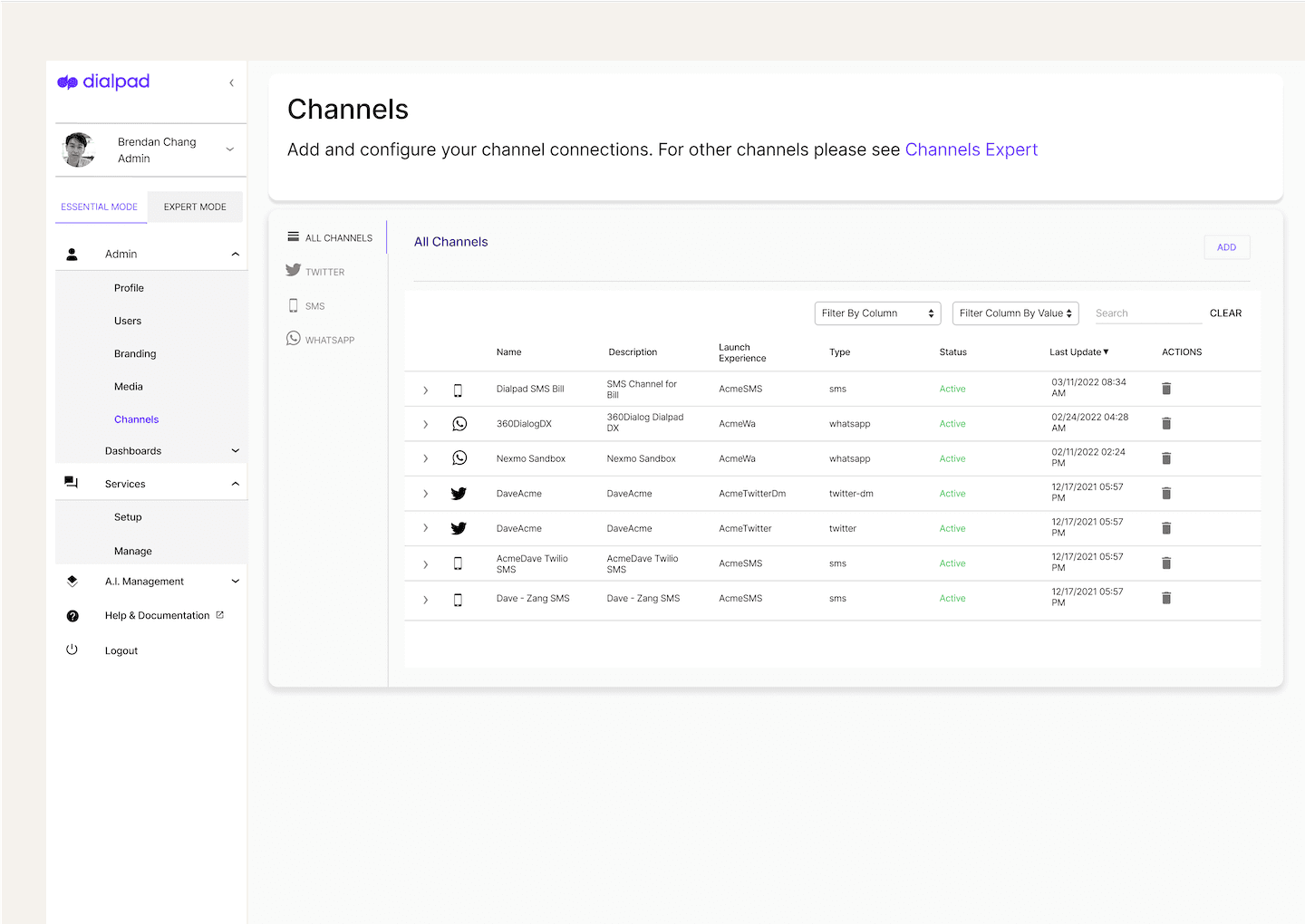Call flows: What are they and why do they matter?

Product Marketing Lead, Onboarding & Ecosystem

Tags
Share
Handling a high volume of incoming calls doesn’t have to overwhelm your team. A call flow helps organize how calls move through your business or contact center, ensuring every caller reaches the right person or department quickly. With the right setup, your call center call flow can improve response times, reduce missed calls, and create a smoother customer experience from start to finish.
What is a call flow?
A call flow is like a roadmap that outlines how phone calls move through a company's communications or a contact center. It defines every step a caller might take, from the moment they dial in to when their question is resolved. A well-designed call flow helps agents manage conversations efficiently, improves first call resolution, and ensures customers get the right help faster.
There are two main functions of a call flow: call routing and agent guidance. Call routing focuses on directing calls to the most appropriate destination, while agent guidance provides a framework for how agents handle conversations once the call is connected. Together, these elements help streamline customer interactions and create a consistent experience across every call.
Call routing
Greeting
Every call flow begins with a greeting that sets the tone for the interaction. This can be a recorded welcome message, business hours announcement, or brand introduction that ensures the caller knows they’ve reached the right place.
IVR menu
An Interactive Voice Response (IVR) menu allows callers to choose from a list of options that help route them to the right department or agent. This automated step saves time, reduces wait times, and ensures calls reach agents with the right expertise.
Transfers
Sometimes, a call needs to be transferred to another department or specialist. A well-structured call flow ensures that call transfers happen smoothly, keeping customers informed and minimizing the frustration of being passed around.
Agent guidance
Scripts
Scripts give agents a clear structure for greeting callers, verifying information, and maintaining a consistent tone. They help ensure that all customers receive accurate and professional responses, even when handled by different agents.
Information gathering
This stage helps agents collect key details such as customer names, account numbers, or the reason for the call. Organized information gathering reduces repeat questions and allows agents to focus on solving the issue efficiently.
Problem resolution
The final step of agent guidance centers on resolving the customer’s issue as quickly and accurately as possible. By following a predefined process, agents can stay on track, provide clear next steps, and close calls with confidence.
How does a call flow work?
Understanding how a call flow works is essential for designing an efficient and consistent caller experience. A well-structured call flow helps ensure every call follows a logical path, reduces confusion for both customers and agents, and improves overall service quality. For most call flows, the process typically follows several key stages:
Call initiation: The call flow begins when a customer dials a business or support number. The phone system receives the call and begins routing it through the predefined call flow settings.
Automated greeting: The caller is greeted with a recorded message that confirms they’ve reached the correct business. This greeting can include business hours, menu options, or promotional information.
Information gathering: Next, the system or agent collects important details from the caller, such as their name, account number, or the reason for the call. This step helps ensure the call is directed to the most appropriate department or agent.
Call routing: Based on the information provided, the call is automatically routed using rules such as language preference, location, or issue type. Effective routing reduces wait times and helps connect customers with agents best equipped to assist them.
Agent interaction: Once connected, the agent uses the information gathered earlier to provide personalized and efficient support. This stage focuses on understanding the caller’s needs and resolving their issue as smoothly as possible.
Resolution or escalation: Finally, the agent resolves the issue or escalates the call to a higher-level support team if necessary. A clear resolution process ensures the customer’s concerns are addressed and helps maintain consistency across all interactions.
Why are call flows important in a call center?
Call flows play a critical role in helping contact centers handle large volumes of incoming calls efficiently. They guide each call through a structured process, ensuring customers reach the right agent or department quickly. This not only reduces hold times but also improves first call resolution and helps agents stay organized. A well-designed call flow supports a more consistent, professional customer experience and optimized productivity.
First call resolution: A clear call flow helps agents gather the right information and connect customers to the right expert the first time they call. This minimizes transfers and callbacks, leading to faster solutions and happier customers.
Increased productivity: With a defined structure for routing and handling calls, agents spend less time figuring out where a call should go and more time solving issues. This efficiency allows teams to handle higher volumes without compromising service quality.
Customer loyalty: A smooth and efficient customer service call flow creates positive experiences that encourage repeat business. When customers can reach the right person quickly and get their issues resolved with minimal effort, they’re more likely to stay loyal to your brand.
Tips to improve your call flow process
Optimizing your call flow is an ongoing process that helps reduce friction, improve efficiency, and keep customers satisfied. By regularly reviewing your systems and training your agents, you can create a more flexible, data-driven customer experience. Here are three key areas to focus on and how Dialpad helps you strengthen each one.
1. Streamline your IVR system
Best practice: Keep IVR menus short and easy to navigate. The goal is to get callers where they need to go quickly, without forcing them to sit through unnecessary or outdated options.
The problem it solves: Long or confusing IVRs frustrate customers, increase abandonment rates, and make it harder for callers to reach the right department. Over time, outdated menus can also lead to higher call volumes and wasted time for both agents and customers.
Dialpad solution: Dialpad makes it easy to adjust call flows in real time and identify friction points with built-in IVR analytics. Using AI-powered routing, you can automatically direct callers to the right agent or team based on intent or topic. This helps you continuously refine your call center process and improve the overall customer experience.

2. Support an omnichannel customer service call flow
Best practice: Expand beyond voice to include channels like live chat, SMS, and social messaging to meet customers where they are. This gives callers multiple ways to connect with your business while reducing call volume and wait times.
The problem it solves: High call volumes can overwhelm agents and frustrate customers who prefer alternative channels. Limiting support to phone calls slows down response times and can lead to lower satisfaction and missed opportunities to engage.
Dialpad solution: Dialpad’s unified contact center brings together voice, video, SMS, live chat, and social messaging in one platform. It also includes self-service tools like chatbots, allowing customers to get quick answers without speaking to an agent. This omnichannel approach helps you build a more flexible and efficient customer service call flow.

3. Provide ongoing training to improve call center workflows
Best practice: Establish a quarterly or annual training cadence to refresh scripts, update templates, and align call flows with changing products, pricing, and customer needs.
The problem it solves: Without consistent training, agents may rely on outdated information, overlook new customer issues, or deliver inconsistent service. This can lead to longer calls, higher escalation rates, and a less cohesive experience for customers.
Dialpad solution: Dialpad’s AI Live Coach Cards automatically provide on-screen coaching when specific topics or keywords come up during a call. Supervisors can create tailored notes or talking points to help agents respond accurately and confidently. This continuous support helps teams stay up to date while maintaining a smooth, effective call flow customer service experience.

One thing that I love in Dialpad is the call journey feature, where you can see where calls were routed, forwarded, and changed. It’s beautiful, and brought a lot of peace of mind to our call center operations—there’s no more wondering where a call came from or how someone got it.
Sahil Farooqi
Head of Customer Care
Design intuitive call center workflows
If your business or contact center handles a steady volume of calls each day, having intuitive call flows is essential to keeping customers happy and hold times low. A well-designed call center workflow ensures that calls move smoothly between agents and departments without confusion or repetition.
One of the most common issues in poorly designed call flows is when customers have to repeat themselves multiple times after being transferred. Nobody enjoys explaining their problem four or five times in a single call, only to end up in another queue or voicemail. This kind of experience frustrates customers and makes your team appear disorganized.
The good news is that the right contact center platform can help prevent this. When your system is integrated with your CRM, all relevant customer information—such as past interactions, account details, and notes—stays synced and visible across agents and channels. Even if a call is transferred, the next agent can instantly see the full context and pick up right where the previous conversation left off.
For example, Dialpad integrates with CRMs like Salesforce and HubSpot to automatically sync contact data and embed a dialer directly inside those platforms. This allows agents to make calls, view records, and log activities without switching tabs, ensuring smoother handoffs and more efficient customer interactions.
If you’re looking for a unified solution that lets your team manage call flows and all other communication channels in one place, Dialpad's platform gives you the tools to design intuitive, data-driven workflows that keep customers informed and satisfied from start to finish.
Update your call flows anytime with just a few clicks
With Dialpad Support, you can make changes to your call flows in minutes, without any IT help. See how it works with a demo!
